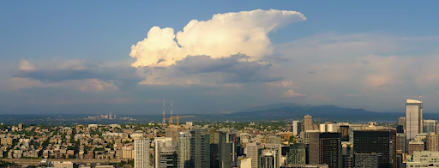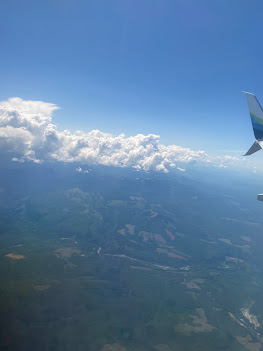As many readers of the blog know, I often provide a reality check for over-the-top and often inaccurate Seattle Times articles dealing with climate change.
It is unfortunate that the Seattle Times has moved to an advocacy role on the issue of climate change, often exaggerating the effects of global warming. They often fail to provide reliable information to their readers on this important topic.
In yesterday's online paper, they had a front-page story written by their columnist, Danny Westneat: Mount Rainier is melting. Can anything be done to stop it?
As you can imagine, they are talking about the glaciers on Mt. Rainier. The story references a new "piercing" National Park Service report and talks about the substantial reduction in glacier ice volume.
The message in the article is clear: Rainier's glaciers are now rapidly retreating and that human CO2 emissions are the cause. We need to act now.
"It’s climate change before your eyes."
"We’ve really got to focus on how we emit carbon into the air.”
This is a very deceptive article designed to convince us that a signature aspect of our region is being lost due to human carbon emissions.
The truth is that Rainier's glacial melt has been predominantly natural, with human carbon emissions a small part of the story.
Although the story was supposedly motivated by a new report by Scott Beason and associates of the National Park Service (a very nice piece of work, I might add), this article NEVER mentions that most of the glacial loss on Rainier has little to do with human-caused climate change produced by increasing CO2, and the proof of this statement is found in the report itself.
Consider Figure 6 of the report, which shows the change in glacial ice area on Mount Rainier since 1895 (below). The glacial area has been reduced from around 130 km2 to around 75. Note that most of the loss was between 1895 and 1970, a period when there was very little human-caused global warming.
Ice Volume shows the same story (see below)
Viewing the ice volume of Rainier's largest glacier (Emmons) shows that nearly ALL of the loss occurred during the 1895-1915 period.
In fact, we have a good idea of what happened. From roughly 1350 to 1850 AD, a large portion of the Northern Hemisphere was in the Little Ice Age, a period of cold temperatures and enhanced snowfall. There are a variety of proposed mechanisms, including changes in solar radiation and shifts in ocean circulation, all caused by natural processes. Starting during the late 1800s, the world and our region started to warm, and glaciers began to melt and retreat...as shown in the figure above.
Don't get me wrong: global warming due to our emissions of greenhouse gases is slowly warming the planet and such warming would contribute to glacial melt during the past few decades. But that contribution has been quite modest compared to natural variability, something that is not mentioned in the article.
But there is more.
The amount of warming that has occurred over Rainier (and our region in general) has been relatively small due to the presence of the Pacific Ocean, which has slowed regional warming considerably. And this is particularly true of the windward (western) side of the Cascades, of which Rainier is a part.
We can show this explicitly using observations at Paradise on Mt. Rainier, located at roughly 5000 ft ASL. Below is a plot of annual temperatures at Paradise from 1917 to 2022, covering the period following the end of the Little Ice Age.
There is NO WARMING. In fact, the trend line shows slight cooling. This hardly suggests a major warming that would cause massive glacial melt. There are periods of slightly warmer and cooler temperatures, but no overall trend.
I should note that there was little change in precipitation over the entire period at this location.
But let's take this one step further. Glaciers are controlled by additions during the winter and melting during the summer, so let's look at the trend of summer (June, July, August) temperatures at the Paradise Ranger Station (below). There is a small upward trend of roughly 1°F. Less ocean influence during the summer.
The long-term perspective is critical for looking at such climatological data. Imagine I plotted only the last 30 years of Rainier summer temperatures (see below).
YIKES. Now the temperatures have warmed by 4F! Folks would start to panic.
The Bottom Line
A detailed look at the excellent National Park Service report and long-term glacial and meteorological data suggests the following story.
There has been a substantial loss of glacial area and mass on Mount Rainier during the past 130 years.
Most of the loss has been natural and occurred before human-forced global warming could have been significant.
Mount Rainier, downstream of the slow-to-warm Pacific Ocean, has experienced very little warming over the entire year since the early part of the 20th century. Summer warming has been weak over the past century, but there has been some short-term warming during the past decades.
I believe a reasonable conclusion of all this is that most of the glacial loss on Rainier during the past century has been natural, but that human-caused warming could be making a modest contribution to glacial loss during the past few decades.
I wish Seattle Times reporters such as Danny Westneat would take the time to provide their readers a scientifically accurate, nuanced understanding of what is occurring. And no, I don't think his idea of putting tarps or glass beads on the glacier is a good idea.
Finally, let me note that it SNOWED at Paradise this morning. Mother Nature is telling us something.


































.png)






.png)
.png)
.png)







.png)



